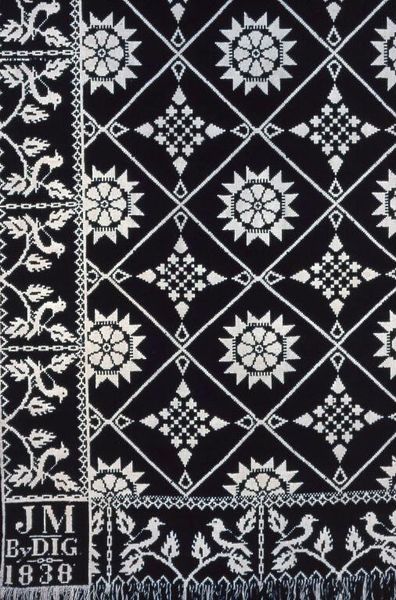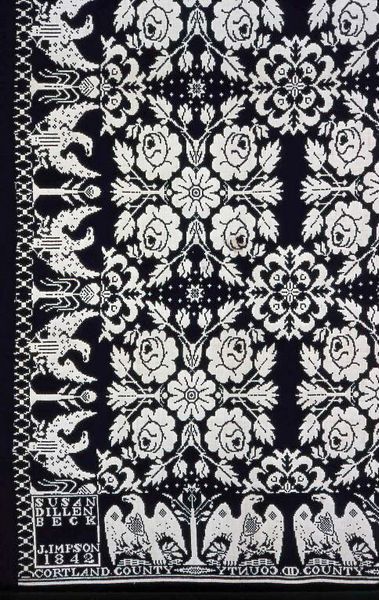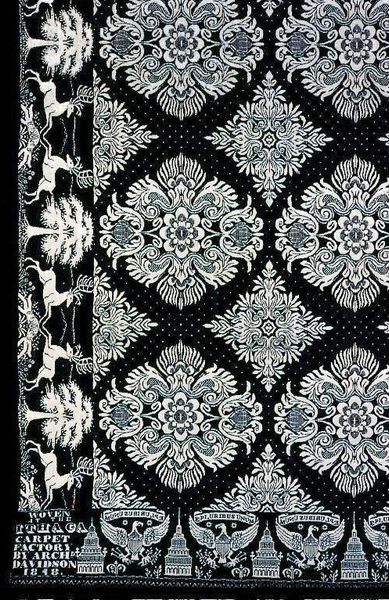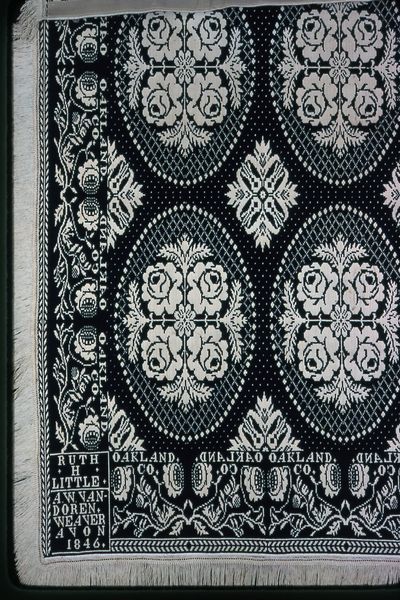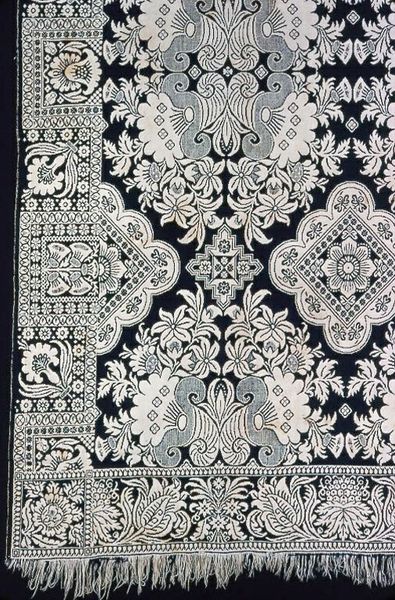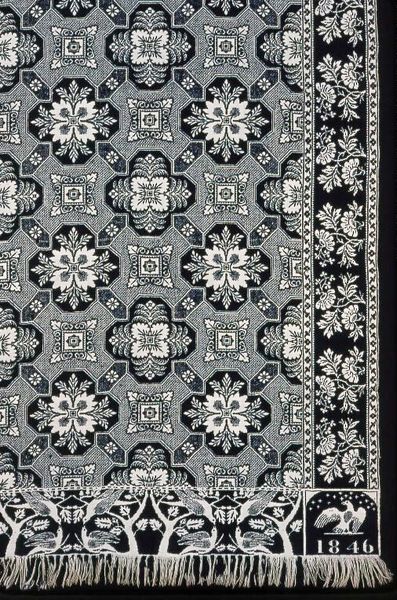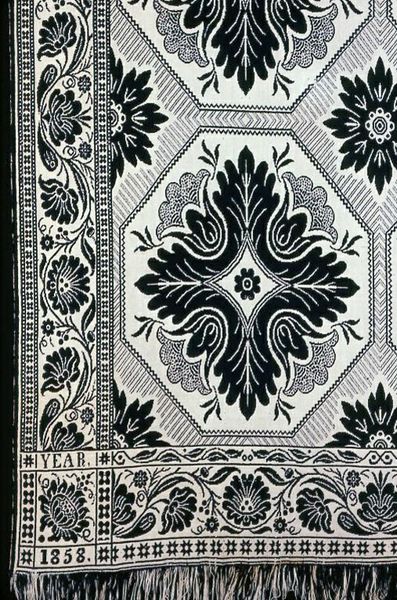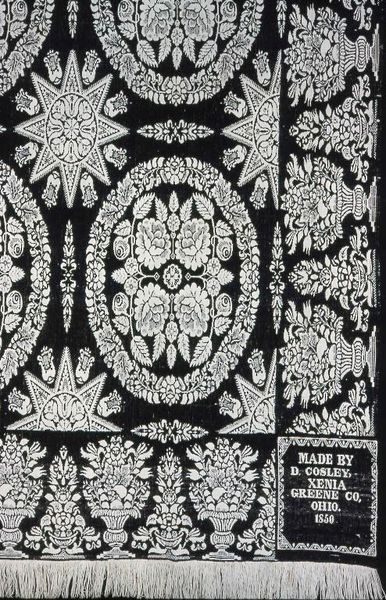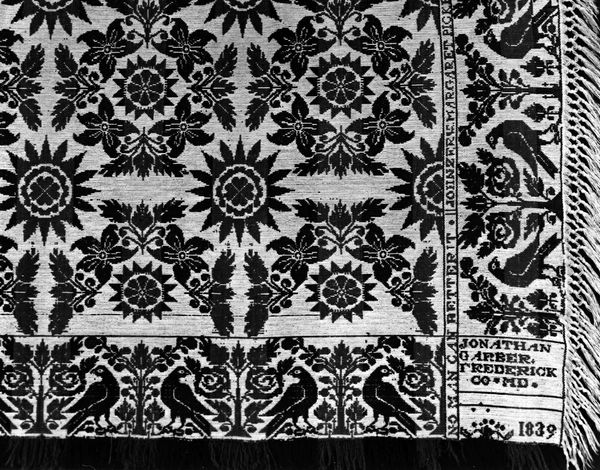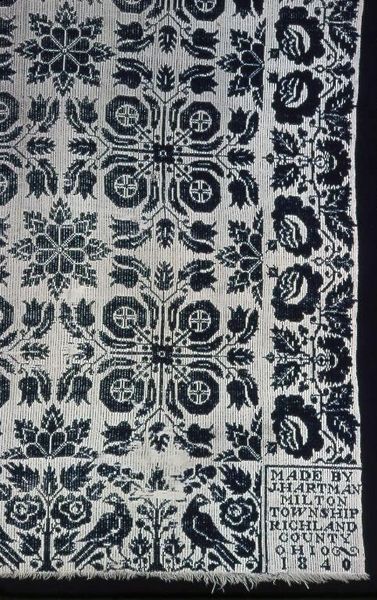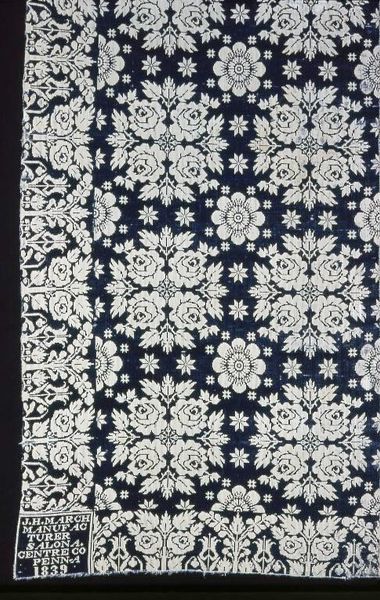
fibre-art, weaving, textile
#
fibre-art
#
weaving
#
textile
#
geometric pattern
#
geometric
#
decorative-art
Dimensions: 241.9 × 201.5 cm (95 1/4 × 79 3/8 in.) Repeat: 58.5 × 46.5 cm (23 × 18 3/8 in.) Side border: 25.3 cm 25.4 cm (10 in.) Lower border: 26 cm 25.7 cm (10 1/8 in.)
Copyright: Public Domain
Curator: I find the stark contrast of this coverlet incredibly striking. The piece, made of woven textile, has such high contrast it almost looks stenciled. Editor: Well, let's provide some context. This is a coverlet from 1839, attributed to James Alexander. It's part of the Art Institute of Chicago's collection, offering a glimpse into textile production of the time. Coverlets like these were common expressions of domestic artistry and community identity. Curator: Community identity indeed! I see symbols referencing "American Independence Declared July 4, 1776." The birds with banners, alongside what look like government buildings are explicitly patriotic. The geometric organization, for me, makes this not just decorative but a powerful articulation of a new, American, identity in visual form. Who was its intended audience and message to that public? Editor: Exactly. Understanding that social and political backdrop helps. Coverlets played a vital role within the domestic sphere, they reflect a collective consciousness around nationalism in a post-revolutionary era. Given the presence of James Alexander’s name, one interpretation might suggest a self-fashioned artisan proudly displaying his contribution to that burgeoning identity narrative in 1839, celebrating patriotic, shared national principles. Curator: I am captivated by the interplay between its visual, almost architectural motifs and its textile identity. It begs us to ask what these types of crafts meant to individuals and within society. Consider the politics, gendered labor roles of women, family tradition, the economic factors surrounding art practices and folk style that it signifies. Its design reads almost like encrypted language using symbols as markers. How much are these messages hidden in plain view? Editor: The very nature of it as woven rather than say painted underscores domestic traditions, with textile and weaving serving simultaneously practical as well as public performance for cultural significance by families across socioeconomic divides as artistic accomplishment through labor that has the power both to unite or be disruptive given identity and gender. Curator: So, in that sense, studying this coverlet offers a tactile glimpse into the ways social history gets woven—pun intended—into domestic life. Editor: Precisely. It allows us to consider the multiple, sometimes contradictory, layers of meaning embedded within the visual and material culture of everyday life.
Comments
No comments
Be the first to comment and join the conversation on the ultimate creative platform.
